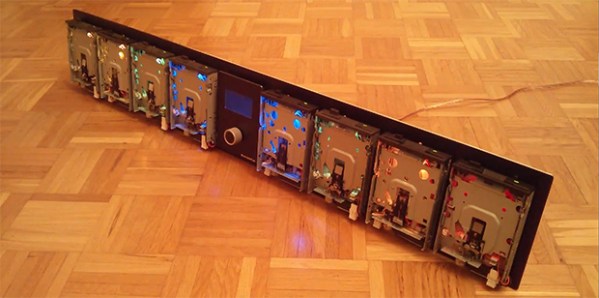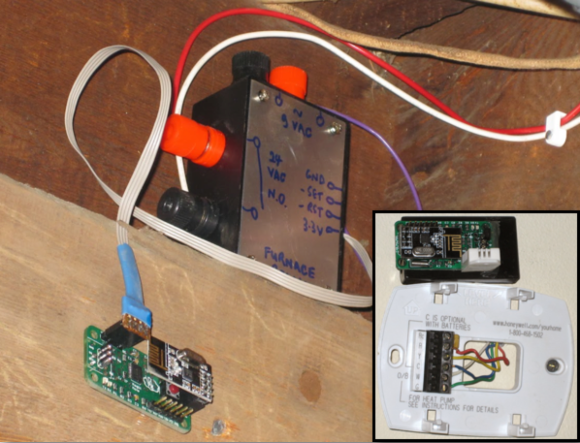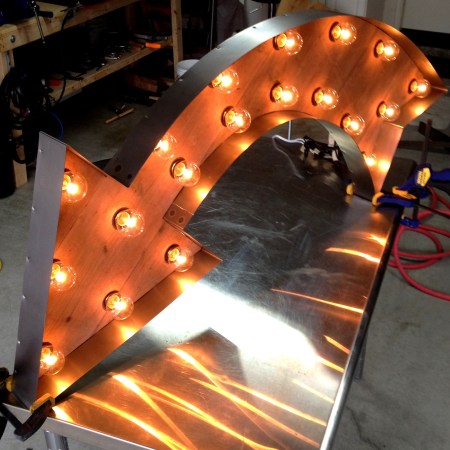Playing music on floppy drives is something that has been done to death. [kiu]’s RumbleRail is something else entirely. Yes, it’s still a collection of floppy drives playing MIDI files, but the engineering and build quality that went into this build puts it in a class by itself.
Instead of the usual assemblage of wires, power cords, and circuits that accompany most musical floppy drive builds, [kiu]’s is an exercise in precision and modularity. Each of the eight floppy drives are connected to its own driver with an ATMega16 microcontroller on board. The microcontrollers in these driver boards receive orders from the command board over an I2C bus. Since everything on the RumbleRail is modular, and the fact [kiu] is using DIP switches to set the I2C address of each board, this build could theoretically be expanded to 127 voices, or 127 individual floppy drives each playing their part of a MIDI file.
The RumbleRail can also operate in a standalone mode without the need for a separate computer feeding it data. MIDI files can be loaded off an SD card by the main controller board, and decode them for the floppy drivers.
If you’d like to build your own RumbleRail, all the board files, schematics, and firmware are up on [kiu]’s git. There are, of course, a few videos below of the floppy jukebox in action.
Continue reading “The Most Beautiful Floppy Disk Jukebox Ever”




 [Rick], an Adafruit learning system contributor, is excited by the implications of STEM’s reach into K-12 education. He was inspired to design
[Rick], an Adafruit learning system contributor, is excited by the implications of STEM’s reach into K-12 education. He was inspired to design 












